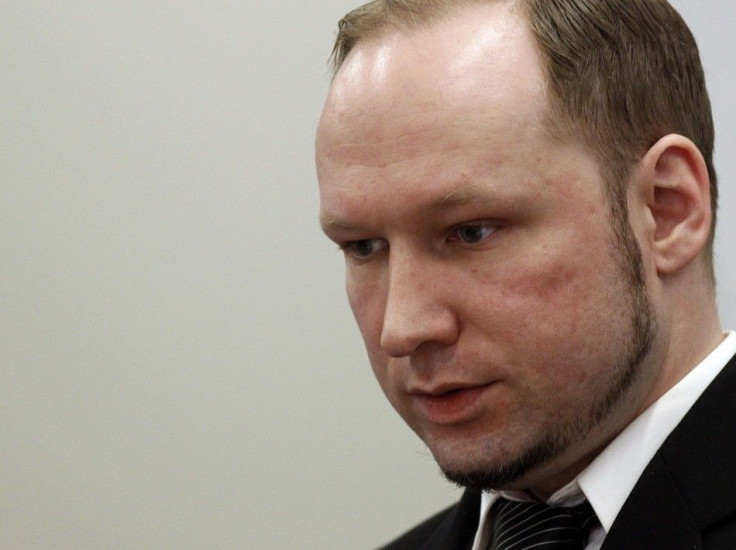Anders Breivik Trial: Goal Was To Decapitate Former Norwegian PM

Anders Behring Breivik was trying to capture and decapitate former Norwegian Prime Minister Gro Harlem Brundtland during the massacre on Utoya island, he said on Thursday.
Breivik, who was behind the solo terrorist attacks in Oslo on July 22, said during the fourth day of his trial that part of his mission was to film himself beheading Brundtland, who was one of 600 people at the Labour Party camp, according to Norway's Dagbladet newspaper.
I had brought with me a bayonet and a knife as well as guns, he told prosecutor Svein Holden. I would shoot it with an iPhone and put the movie on the Internet. But I did not buy ... an iPhone, he added, saying he got the idea from al Qaeda. But Brundtland had already left the youth camp when Breivik arrived on Utoya after detonating a car bomb outside government headquarters in Oslo, killing eight and injuring 200. Breivik then shot 69 people to death, most of them teenagers, on the island.
The goal was to kill everybody, the 33-year-old told the court.
Brundtland, who has served three terms of Prime Minister, was Norway's first-ever (and this far only) female PM.
On Thursday, Breivik described his original plan was for a very large operation that included three car bombs and at least one shooting. He told the courtroom, where the families of victims and survivors of the attack were in attendance, that if he survived the bombings he was going to drive a motorcycle to multiple targets, executing as many people at each before moving on.
Breivik detailed much of his training -- and much of his plot -- in the rambling 1,500-page manifesto, 2083: A Declaration of European Independence. In it, he not only espoused the militant right-wing philosophy the court heard echoes of on Tuesday, but also explained how he made the bomb that eventually killed eight people and where he bought the materials. Last year, police were able to use this information to track down and arrest 19 Polish nationals who were selling bomb-making materials online.
The manifesto suggests that Breivik had been plotting the attacks -- or at least some variation thereof -- for the past nine years and he told the court on Thursday that he had starting considering the idea of political violence when he was “19-20 years old,” some 13 years before the July 22 massacre.
Some of his training, as he revealed during questioning, included playing thousands of hours of video games like Call of Duty: Modern Warfare and World of Warcraft, the former giving him practice in targeting and fighting his way out of government buildings.
But his actual plan wasn't set until the last minute. Breivik said during questioning on Thursday that “human limitations” and slow preparation meant that he had to switch his primary target from either the Labour Party conference or the annual meeting of Norwegian journalist to the summer camp, according to the Financial Times.
Before settling a shooting operation on Utoya, Breivik also considered attacks on the Aftenposten newspaper, City Hall and the Royal Castle.
Breivik has been charged with acts of terrorism under section 147 A and B of Norway's penal code, as well as with 77 counts of murder and 42 counts of attempted murder. Breivik pled not guilty to the charges on Monday, saying that the murders were acts of necessity and that he would have done it again.
Terrorism charges carry a maximum 21-year sentence in Norway; however, the court could extend his sentence once it's completed if Breivik is deemed a danger to society. Additionally, the court's final determination on Breivik's sanity will be of great importance -- if declared insane, Breivik could be institutionalized for the rest of his life rather than imprisoned.
During proceedings on Wednesday, Breivik himself said that a 21-year maximum sentence was unacceptable and pathetic.
There are only two just and fair outcomes of this case. One is an acquittal, the other is capital punishment, he said.
© Copyright IBTimes 2024. All rights reserved.




















